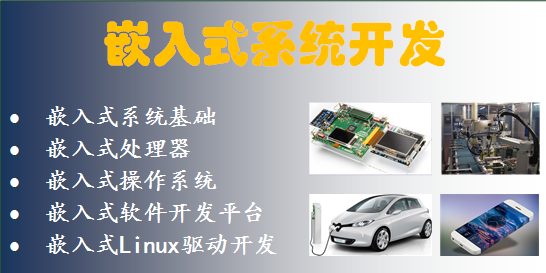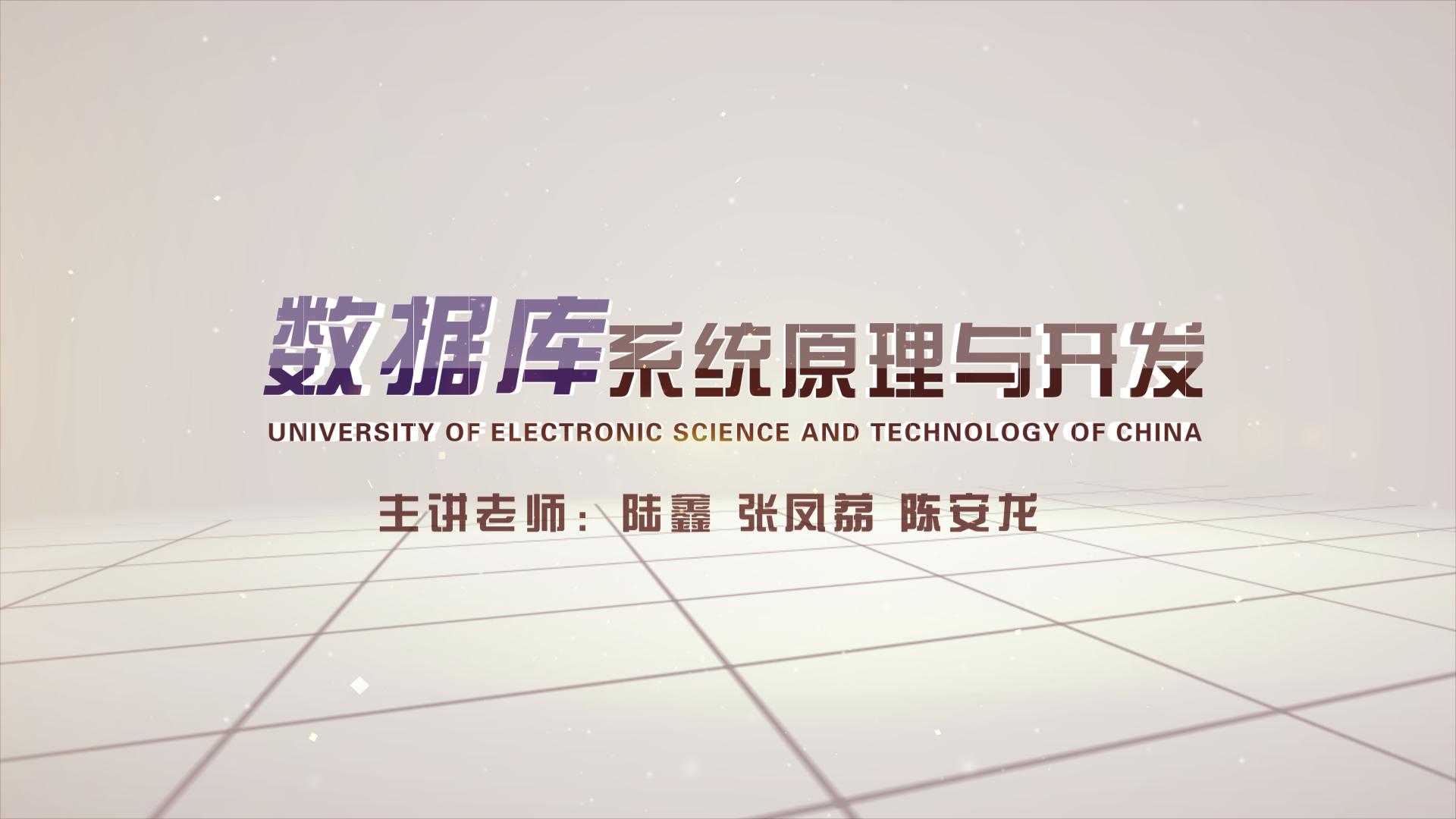
当前课程知识点:Five Disciplines of Management Quality and Ability —— Follow Me to Learn Management > The Third Discipline: Efficient Organization, Excellent Culture > 3.8 Case Study: Resignation (Ⅱ) > 3.8 Case Study: Resignation (Ⅱ)
返回《Five Disciplines of Management Quality and Ability —— Follow Me to Learn Management》慕课在线视频课程列表
返回《Five Disciplines of Management Quality and Ability —— Follow Me to Learn Management》慕课在线视频列表
大家好
上次课我们介绍了案例 辞职风波
并给大家留下了思考题
1 问题产生的原因是什么
2 最大的责任人是谁
3 如果你是林彤 为了解决问题
你将如何同他们去沟通
请设计沟通顺序
在沟通方式和内容上该注意哪些
这次课 我们一起来详细地讨论一下这个案例
我们先来回顾一下案例的基本情况
这家公司的总部在深圳
上海是一家分公司
刘英是分公司的总经理
同时又分管技术支持这一块
王强是副总经理
同时分管程序开发这一块
林彤是上海分公司的人事主管
李维是提出辞职的员工
徐远和吴杰都是李维的同事
现在我们围绕着三个思考题来进行分析
首先 我们分析一下问题产生的原因是什么
这是个典型的沟通冲突问题
在沟通渠道和沟通程序和技巧上都存在问题
在沟通渠道方面
纵向沟通和横向沟通的渠道都有问题
纵向看 总经理刘英
并不完全了解程序员的实际表现和工作情况
而程序员李维
对于自己在总经理刘英心目中的真实评价
也并不是完全了解
我们从横向来看
技术支持部门和程序开发部门
沟通不够
两个部分之间相互地指责
因此我们说
在纵向和横向沟通渠道上面都是不畅通的
在沟通技巧和程序方面
从沟通技巧上来看
在项目最关键的时刻应该是以正面鼓励为主
然而 总经理刘英在项目最关键的时刻
指责关键性的员工
这是管理的大忌
往往会使管理者陷入类似我们案例中
李维提出辞职不干的这种被动地位
此外 作为管理者应该对于不同性格的员工
在沟通方式上面要因人而异
总经理刘英并没有针对李维的性格特点
采取合适的沟通方式
从沟通程序上来看
总经理刘英直接批评一线员工李维
这是一种越级指挥的表现
正常情况之下
他应该是批评谁
他应该是批评副总王强
当然
公司在人才培养 组织结构设计等等方面
也是存在一些问题的
关于这方面的问题
我们将在课后的互动讨论区跟大家一起来讨论
接下来 我们来分析一下最大的责任人是谁
是刘英 还是李维 都不是
我们认为问题最大的责任人是王强
前面我们跟大家谈到
问题产生的根本的原因是
横向和纵向沟通都有问题
而导致横向和纵向沟通这些问题
产生的的关键节点是谁
就是王强
表面上看是刘英跟李维的冲突
但是导致这个冲突的根本的原因是
王强的工作缺失
现在 我们来看
我们应该如何去解决这个棘手的问题
在解决任何问题之前
我们首先要明确解决问题的出发点和方向
也就是我们留不留李维
我们留不留一个人
必须要看他是否符合公司的利益
我认为 留下李维
即符合公司当前的利益
也是符合公司长远的利益
因为李维一旦离开
项目有可能中止
同时李维也有希望成为公司最优秀的程序员
那么 如何去解决这个问题
首先我们大家思考一下
我们在沟通顺序上
是先找上级 还是先找下级
沟通中有个最基本的原则
我们了解情况一定是自下到上
而解决问题 一定是自上到下
我们从案例材料里面大家都可以看到
林彤在第一轮了解情况的过程中
他是怎么做的
他是从下到上
先找普通员工 再找副总
最后找的是总经理
现在这一轮
不再是了解情况了
而是要解决问题
应该是 自上到下 先找上级 再找下级
我给出的解决方案 一共有五个步骤
第一步 林彤先找王强
为什么要先找王强
原因有两点
第一 王强是李维的直接上级
最了解李维的情况
对于李维值不值得留
王强是最有发言权的
第二 王强不是局外人
在这件事情上面负有主要的责任
在沟通方式上面 我们应该采取的是
以下级向上级请示汇报工作的态度为主
以共同探讨解决问题的态度为辅
在沟通内容及目的上主要有
一 听取王总关于李维值不值得留的意见
进一步去明确解决问题的方向
第二 林彤主动承揽责任
检讨自己作为人事主管应负的责任
并且通过这种委婉的方式
让王强也能够意识到
他在这件事情上面不是局外人
应该是负有责任的
第三点 要让王强意识到
如果这个问题不解决
那么王强的工作将会陷入被动状态
第四点 要说服王强 一同去找总经理刘英
希望刘英能够留下李维
第二步 由林彤和王强一起去找刘英
这么做的原因是
刘英是总经理
对于李维能不能够留下
刘英是拥有决定权的
同时林彤作为刘英的下级
必须先要了解上级的态度
才能够决定下一步该怎么做
也就是说留不留李维
在沟通方式上
要以下级向上级请示汇报的态度为主
以共同探讨解决方案的态度为辅
在沟通的内容及目的上面主要有这么几点
一 介绍李维的工作情况以及他辞职之后
可能给项目带来的不良后果
二 林彤检讨自己作为人事部门应负的责任
三 王强检讨自己作为负责人的责任
以及沟通上的不足
四 向刘英提出解决问题的建议
尽管按照公司的惯例
我们不会挽留主动辞职的员工
但是目前项目处于关键的时刻
作为特殊情况之下的特例
建议刘英留下李维
第三步
林彤安排李维的好朋友
徐远 吴杰 去做李维的工作
为林彤下一步劝说李维留下做一个铺垫
第四步 林彤找李维
我们把找李维放在最后一步的原因是
我们在充分了解上级的意见和李维的情况之后
就可以有目的 有针对性的去找李维
在沟通的方式上面
以朋友身份共同探讨解决方案的态度为主
以人事主管同普通员工沟通的态度为辅
沟通内容上面主要有
首先林彤检讨自己作为人事主管应负的责任
第二 充分肯定李维的工作
及同事 领导对其工作的良好印象
让李维知道公司需要他这样的优秀员工
使李维对公司产生比较强的归属感
让李维舒心
也让李维有信心继续待在公司里面
第三点 客观地指出李维的一些不足
以朋友的身份指出李维提出辞职
这是一种不理智不成熟的处理方式
不仅仅会给项目带来不良的后果
更重要的是
会给他个人在行业内的声誉带来影响
影响到他个人未来的职业发展
我们这一步的目的就是要让
李维认识到自己的不足
同时说服李维主动地收回辞职书
当然 在整个项目结束之后
我建议刘英 王强 林彤与李维
要在一起沟通一次
以避免今后出现类似的这个冲突
我们通过这个案例的分析
我们要进一步认识到
沟通很重要 不仅仅是沟通内容
不同的沟通方式方法以及沟通的艺术
都可能会对组织产生不同的影响
所以 为了使组织更好的运行
我们一定要掌握高效沟通的技巧
在这次课结束之前
给大家留下思考题
请大家 用一用
从公司人才培养 组织结构设计方面来看
你认为这个公司还存在什么问题
关于思考题
我们将会在课程互动讨论区与大家一起来讨论
并给出我们的观点
好 这次课就到这里 下次课见
-0.1 What is Management: The Secret of Management is to Borrow Resources
--0.1 What is Management: The Secret of Management is to Borrow Resources
--0.1 What is Management: The Secret of Management is to Borrow Resources
--0.1 What is Management: The Secret of Management is to Borrow Resources
-0.2 Natural Attribute and Social Attribute of Management
--0.2 Natural Attribute and Social Attribute of Management
--0.2 Natural Attribute and Social Attribute of Management
--0.2 Natural Attribute and Social Attribute of Management
-0.3 The Scientificity and Artistry of Management
--0.3 The Scientificity and Artistry of Management
--0.3 The Scientificity and Artistry of Management
--0.3 The Scientificity and Artistry of Management
-0.4 Management Functions, Skills and Roles
--0.4 Management Functions, Skills and Roles
--0.4 Management Functions, Skills and Roles
--0.4 Management Functions, Skills and Roles
-0.5 Case Study: Personal Excellence Doesn’t Mean Much
--0.5 Case Study: Personal Excellence Doesn’t Mean Much
--0.5 Case Study: Personal Excellence Doesn’t Mean Much
--0.5 Case Study: Personal Excellence Doesn’t Mean Much
-0.6 Centennial Management Context (Ⅰ)
--0.6 Centennial Management Context (Ⅰ)
--0.6 Centennial Management Context (Ⅰ)
--0.6 Centennial Management Context (Ⅰ)
-0.7 Centennial Management Context (Ⅱ)
--0.7 Centennial Management Context (Ⅱ)
--0.7 Centennial Management Context (Ⅱ)
--0.7 Centennial Management Context (Ⅱ)
-0.8 Case Study: Management Enlightenment of Journey to the West Team
--0.8 Case Study: Management Enlightenment of Journey to the West Team
--0.8 Case Study: Management Enlightenment of Journey to the West Team
--0.8 Case Study: Management Enlightenment of Journey to the West Team
-Course Introduction Unit Test
-1.1 Insight into the General Trend of the Environment (Ⅰ): PEST Method
--1.1 Insight into the General Trend of the Environment (Ⅰ): PEST Method
--1.1 Insight into the General Trend of the Environment (Ⅰ): PEST Method
--1.1 Insight into the General Trend of the Environment (Ⅰ): PEST Method
-1.2 Insight into the General trend of the Environment (Ⅱ): Porter’s Five Forces Model
--1.2 Insight into the General trend of the Environment (Ⅱ): Porter’s Five Forces Model
--1.2 Insight into the General trend of the Environment (Ⅱ): Porter’s Five Forces Model
--1.2 Insight into the General trend of the Environment (Ⅱ): Porter’s Five Forces Model
-1.3 Case Study: How McDonald’s Entered Chinese Market
--1.3 Case Study: How McDonald’s Entered Chinese Market
--1.3 Case Study: How McDonald’s Entered Chinese Market
--1.3 Case Study: How McDonald’s Entered Chinese Market
-1.4 Strategic Decision Analysis Tools: SWOT Analysis and BCG Matrix
--1.4 Strategic Decision Analysis Tools: SWOT Analysis and BCG Matrix
--1.4 Strategic Decision Analysis Tools: SWOT Analysis and BCG Matrix
--1.4 Strategic Decision Analysis Tools: SWOT Analysis and BCG Matrix
-1.5 Group Decision-making Tools and Methods: Delphi Method and Brainstorming Method
--1.5 Group Decision-making Tools and Methods: Delphi Method and Brainstorming Method
--1.5 Group Decision-making Tools and Methods: Delphi Method and Brainstorming Method
--1.5 Group Decision-making Tools and Methods: Delphi Method and Brainstorming Method
-The First Unit Test
-2.1 Attitude Determines Everything
--2.1 Attitude Determines Everything
--2.1 Attitude Determines Everything
--2.1 Attitude Determines Everything
-2.2 The Components and Formation of Attitude
--2.2 The Components and Formation of Attitude
--2.2 The Components and Formation of Attitude
--2.2 The Components and Formation of Attitude
-2.3 How to Change the Attitude of Employees
--2.3 How to Change the Attitude of Employees
--2.3 How to Change the Attitude of Employees
--2.3 How to Change the Attitude of Employees
-2.4 Responsibility and Efficient Execution
--2.4 Responsibility and Efficient Execution
--2.4 Responsibility and Efficient Execution
--2.4 Responsibility and Efficient Execution
-2.5 Ethics and Core Values
-The Second Unit Test
-3.1 Basic Issues in Organization
--3.1 Basic Issues in Organization
--3.1 Basic Issues in Organization
--3.1 Basic Issues in Organization
-3.2 How to Establish an Effective Organizational Structure (Ⅰ)
--3.2 How to Establish an Effective Organizational Structure (Ⅰ)
--3.2 How to Establish an Effective Organizational Structure (Ⅰ)
--3.2 How to Establish an Effective Organizational Structure (Ⅰ)
-3.3 How to Establish an Effective Organizational Structure (Ⅱ)
--3.3 How to Establish an Effective Organizational Structure (Ⅱ)
--3.3 How to Establish an Effective Organizational Structure (Ⅱ)
--3.3 How to Establish an Effective Organizational Structure (Ⅱ)
-3.4 Case Study: The Responsibility of the Sales Department
--3.4 Case Study: The Responsibility of the Sales Department
--3.4 Case Study: The Responsibility of the Sales Department
--3.4 Case Study: The Responsibility of the Sales Department
-3.5 Effective Communication Skills
--3.5 Effective Communication Skills
--3.5 Effective Communication Skills
--3.5 Effective Communication Skills
-3.6 Organizational Cultural Function and Content
--3.6 Organizational Cultural Function and Content
--3.6 Organizational Cultural Function and Content
--3.6 Organizational Cultural Function and Content
-3.7 Case Study: Resignation (Ⅰ)
--3.7 Case Study: Resignation (Ⅰ)
--3.7 Case Study: Resignation (Ⅰ)
--3.7 Case Study: Resignation (Ⅰ)
-3.8 Case Study: Resignation (Ⅱ)
--3.8 Case Study: Resignation (Ⅱ)
--3.8 Case Study: Resignation (Ⅱ)
--3.8 Case Study: Resignation (Ⅱ)
-The Third Discipline Unit Test
-4.1 How to Recruit Good Staff
--4.1 How to Recruit Good Staff
--4.1 How to Recruit Good Staff
--4.1 How to Recruit Good Staff
-4.2 Motivate Employees’ Work Potential
--4.2 Motivate Employees’ Work Potential
--4.2 Motivate Employees’ Work Potential
--4.2 Motivate Employees’ Work Potential
-4.3 Content-based Incentive Theory (Ⅰ): Hierarchical Theory and ERG theory
--4.3 Content-based Incentive Theory (Ⅰ): Hierarchical Theory and ERG theory
--4.3 Content-based Incentive Theory (Ⅰ): Hierarchical Theory and ERG theory
--4.3 Content-based Incentive Theory (Ⅰ): Hierarchical Theory and ERG theory
-4.4 Content-based Incentive Theory (Ⅱ): Motivator-Hygiene Theory
--4.4 Content-based Incentive Theory (Ⅱ): Motivator-Hygiene Theory
--4.4 Content-based Incentive Theory (Ⅱ): Motivator-Hygiene Theory
--4.4 Content-based Incentive Theory (Ⅱ): Motivator-Hygiene Theory
-4.5 Process-based Incentive theory: Expectation Theory and Fairness Theory
--4.5 Process-based Incentive theory: Expectation Theory and Fairness Theory
--4.5 Process-based Incentive theory: Expectation Theory and Fairness Theory
--4.5 Process-based Incentive theory: Expectation Theory and Fairness Theory
-4.6 Behavioral Transformation Incentive Theory: Reinforcement Theory
--4.6 Behavioral Transformation Incentive Theory: Reinforcement Theory
--4.6 Behavioral Transformation Incentive Theory: Reinforcement Theory
--4.6 Behavioral Transformation Incentive Theory: Reinforcement Theory
-The Fourth Unit Test
-5.1 The Essence and Tasks of Effective Leaders
--5.1 The Essence and Tasks of Effective Leaders
--5.1 The Essence and Tasks of Effective Leaders
--5.1 The Essence and Tasks of Effective Leaders
-5.2 Trait Theory of Leadership
--5.2 Trait Theory of Leadership
--5.2 Trait Theory of Leadership
--5.2 Trait Theory of Leadership
-5.3 Leadership Behavior Theory
--5.3 Leadership Behavior Theory
--5.3 Leadership Behavior Theory
--5.3 Leadership Behavior Theory
-5.4 Leadership Situation Theory
--5.4 Leadership Situation Theory
--5.4 Leadership Situation Theory
--5.4 Leadership Situation Theory
-5.5 Innovation and Entrepreneurship
--5.5 Innovation and Entrepreneurship
--5.5 Innovation and Entrepreneurship
--5.5 Innovation and Entrepreneurship
-5.6 Two New Trends of Innovation
--5.6 Two New Trends of Innovation
--5.6 Two New Trends of Innovation
--5.6 Two New Trends of Innovation
-The Fifth Unit Test
-Final Exam



